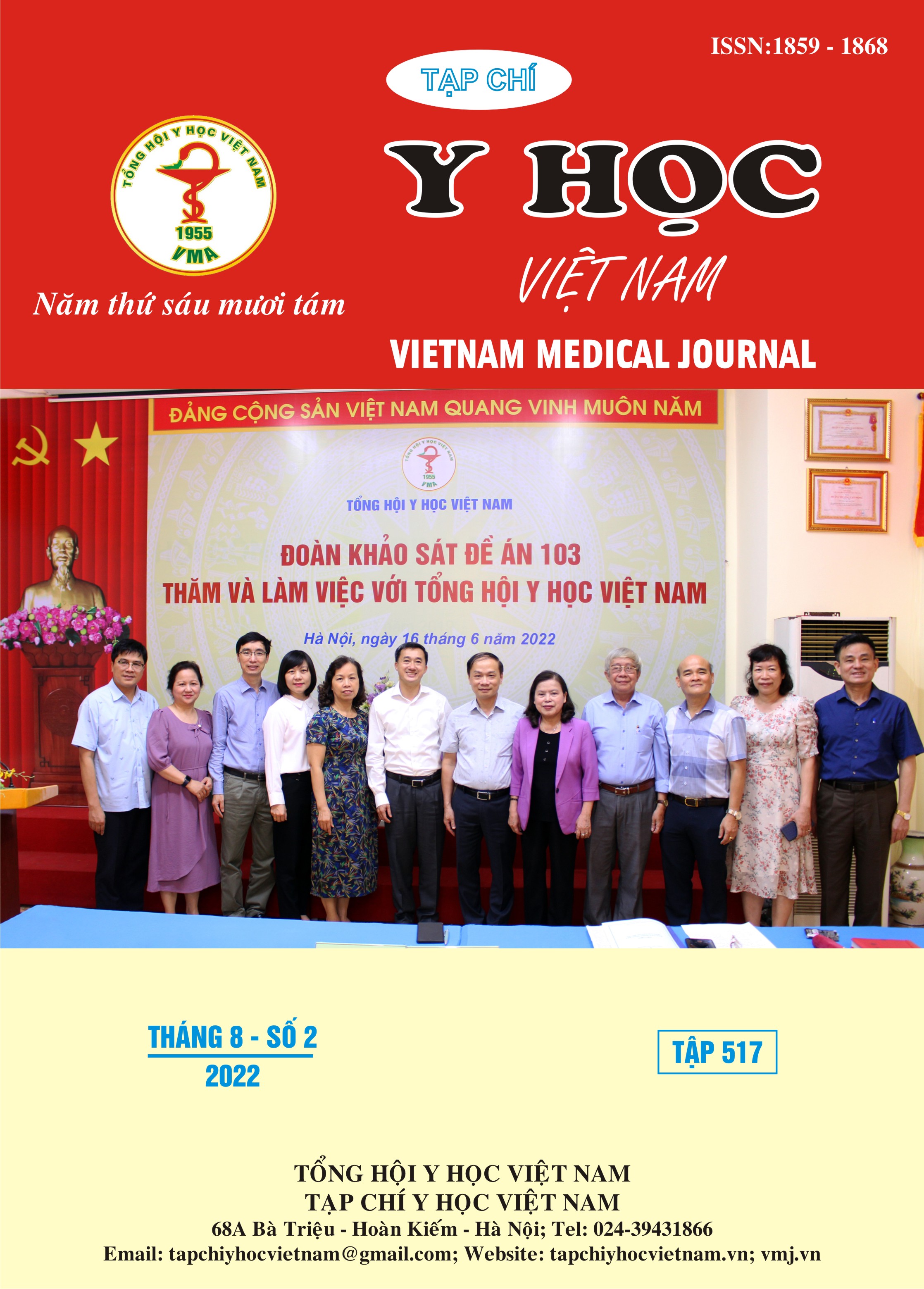CLINICAL, PARACLINICAL CHARACTERISTICS AND TREATMENT RESULTS OF CHILDREN WITH ANAPHYLAXIS AT HAI PHONG CHILDREN'S HOSPITAL IN 2019 – 2020
Main Article Content
Abstract
Anaphylaxis is a particularly serious allergic condition that can be life-threatening if not diagnosed and treated promptly. Objectifs: To describe the clinical and subclinical characteristics of children with anaphylaxis at Hai Phong Children's Hospital in the years 2019-2020 and comment on the treatment results in the above patients. Materials and methods: Descriptive study using retrospective data of 54 cases of children with anaphylaxis selected by convenience sampling method. Results: The main symptoms of anaphylaxis were: cardiovascular, neurological and skin symptoms. Respiratory and gastrointestinal symptoms were seen at a lower rate. The rate of children with acidemia in shock was 50% and increased lactate was 75.9%. 100% of children received the first dose of intramuscular adrenaline. Solumedrol, dimedrol were the drugs most commonly used concurrently with adrenaline. The rate of children re-shocked was low (1.9%). Most of the patients were symptom-free (87.0%), 13.0% of the children got worse or did not improve, requiring referral. Conclusion: Early detection and treatment of anaphylaxis are decisive and prognostic factors. The main treatment is intramuscular adrenaline injection as soon as possible, and prevent re-exposure to the allergen causing anaphylaxis. It is necessary to strictly manage the use of drugs, limit intravenous routes, preferably oral or intramuscular use.
Article Details
Keywords
Anaphylaxis, children, adrenaline
References
2. Mai Văn Lục (2005). Nghiên cứu đặc điểm lâm sàng và điều trị sốc phản vệ tại Bệnh viện Bạch Mai, Luận văn tốt nghiệp Bác sỹ chuyên khoa cấp II. Trường đại học Y Hà Nội.
3. Andersen, L.W. et al. Etiology and therapeutic approach to elevated lactate levels. Mayo Clinic proceedings, 2013. 88(10): p. 1127-1140.
4. Dodd, A., et al. Evidence update for the treatment of anaphylaxis. Resuscitation, 2021. 163: p. 86-96.
5. Pouessel, G., et al. Anaphylaxis admissions to pediatric intensive care units in France. Allergy, 2018. 73(9): p. 1902-1905.
6. Sheikh, A., et al. Adrenaline (epinephrine) for the treatment of anaphylaxis with and without shock. The Cochrane database of systematic reviews, 2008. 2008(4): p. CD006312-CD006312.
7. Sicherer, S. H., Simons, F. E. R., Mahr, T. A., Abramson, S. L. et al. (2017). Epinephrine for First-aid Management of Anaphylaxis. Pediatrics, 139(3), e20164006. doi: 10.1542/peds.2016-4006
8. Topal, E., et al. Epidemiological and Clinical Features of Anaphylaxis: Single Center Experience with 109 Children. Pediatric Allergy, Immunology, and Pulmonology, 2013. 26(2): p. 88-92.


